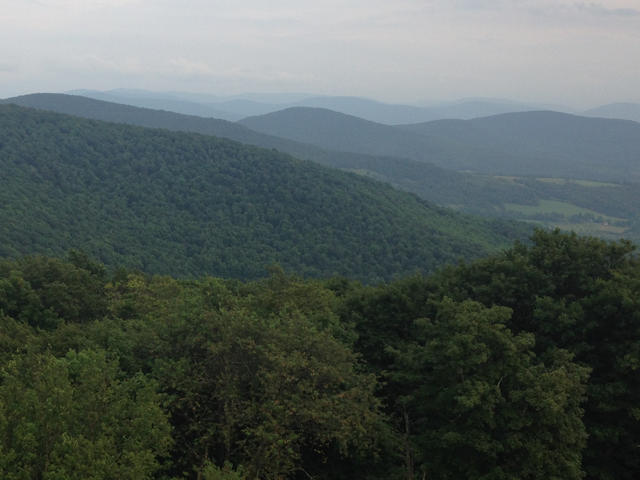Home » Regions » North America » Eastern Temperate Forests » Mixed Wood Plains » Northern Allegheny Plateau » Catskills Transition
Catskills Transition
Last updated: January 3rd, 2020
↑About the Catskills Transition
The Catskills Transition represents a region transitional between the Catskill High Peaks, which they almost completely surround, and the surrounding lowland areas.This area is underlain by shale, sandstone, and conglomerate. The western portion of this region consists of rounded, rolling hills. In the north, there are narrow ridges, and in the east, steeper slopes descending to the Hudson Valley. The region has a humid continental climate, with significantly higher precipitation than the surrounding lowlands, but lower than the peaks. The east and southeast of this region tend to have significant warmer temperatures than the north and west, even at similar elevations.
This area has a variety of different forest types, owing to changes in elevation and temperature. Lower elevations and warmer regions have more oak-hickory forest, with northern hadwood forests at higher elevations, and some spruce and hemlock in bogs and riparian areas. In the east and southeast, the oak-hickory forest extends to higher elevations.
This region has had a small amount of farming, but farming is on the decline and areas have been reverting to forest. This area is sparsely populated, but there are a few small towns, their economies mostly driven by tourism.
This region mostly surrounds the Catskill High Peaks. It is bordered to the east by the warmer, lower-elevation Hudson Valley, to the southwest by the Delaware-Neversink Highlands, and to the north by the Glaciated Low Allegheny Plateau. To the south there is a small border with the diverse but more agricultural Northern Glaciated Limestone Ridges, Valleys, and Terraces.
 This view from the Mt. Utsayantha fire tower shows a landscape typical of the Catskills Transition, with hills and low mountains, not reaching quite as high an elevation as the highest peaks. Photo © TheTurducken (Flickr), CC BY 2.0.
This view from the Mt. Utsayantha fire tower shows a landscape typical of the Catskills Transition, with hills and low mountains, not reaching quite as high an elevation as the highest peaks. Photo © TheTurducken (Flickr), CC BY 2.0.Plant Lists & In-Region Search
We do not yet have data to generate plant lists for a region as fine-tuned as this one. However you can move up to the broader Northern Allegheny Plateau and generate lists for that region: native plants or all plants. Or search that region's plants here:
↑References
1. Bryce, S.A., Griffith, G.E., Omernik, J.M., Edinger, G., Indrick, S., Vargas, O., and Carlson, D. "Ecoregions of New York (Poster)", U.S. Geological Survey (2010) Web.
2. Woods, A.J, Omernik, J.M., Brown, D.D. "Level III and IV Ecoregions of Delaware, Maryland, Pennsylvania, Virginia, and West Virginia", U.S. Environmental Protection Agency: National Health and Environmental Effects Research Laboratory, Corvallis, OR (1999) Web.


